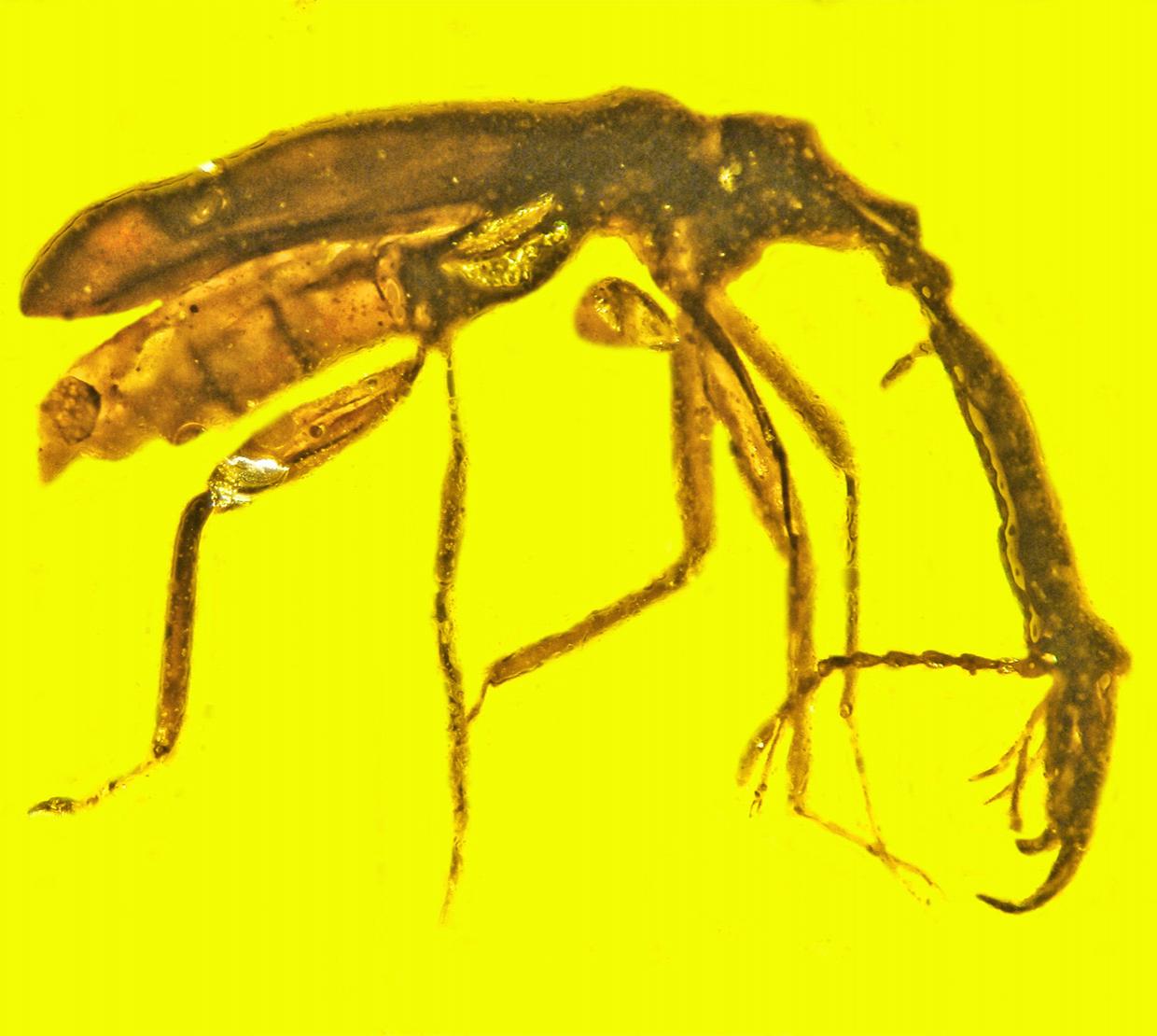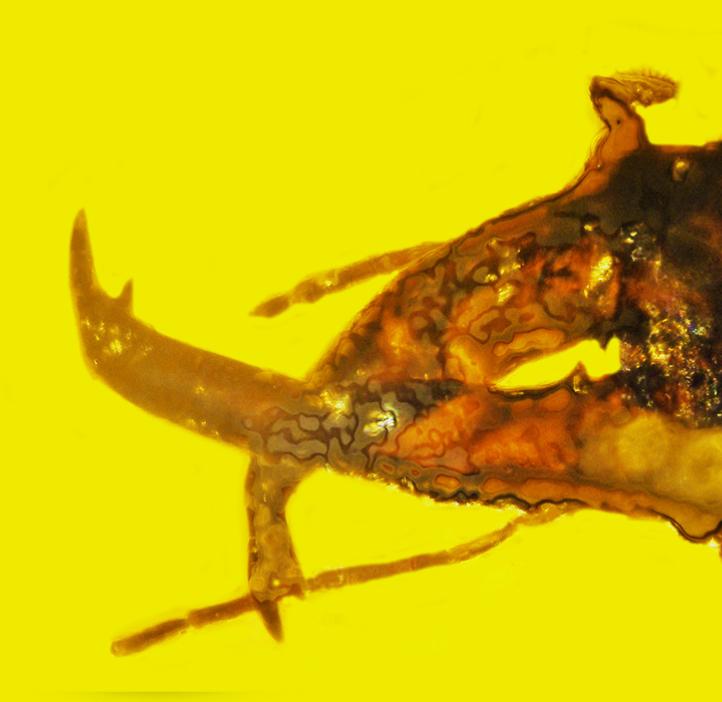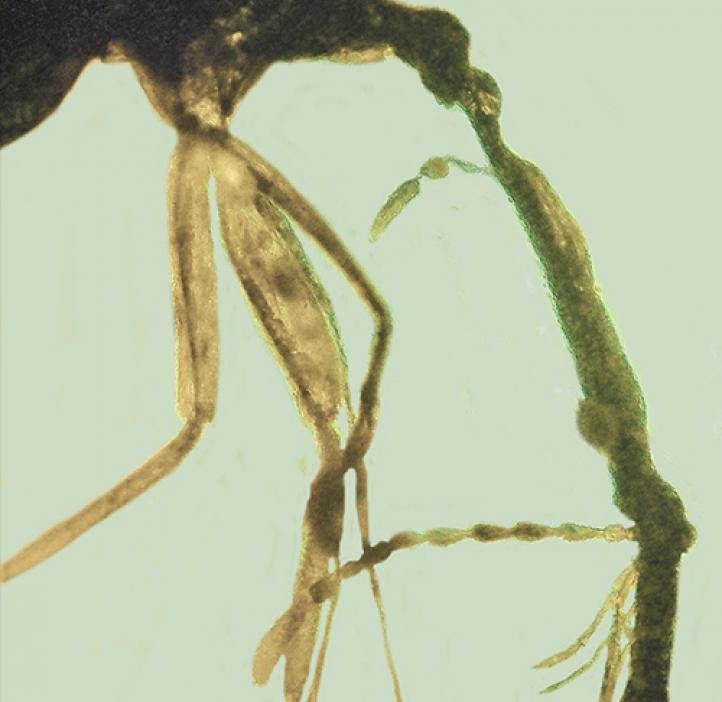CORVALLIS, Ore. — Oregon State University research has identified a 100-million-year-old weevil unlike any other known fossilized or living weevil.
George Poinar Jr., an international expert in using plant and animal life forms preserved in amber to learn about the biology and ecology of the distant past, calls the male specimen a “mammoth weevil” because of its “monstrous trunk” – also known as the weevil’s rostrum or beak.
Poinar said Rhamphophorus legalovii, as the long-bodied weevil fossil is known scientifically, probably wielded its trunk as a weapon while in combat with other males over females.
Encased in Burmese amber, the specimen represents a new tribe, genus and species. Rhamphophorus derives from a pair of Greek words meaning “curving beak” and “to bear,” and legalovii honors Russian weevil specialist Andrei A. Legalov.
“Entomologists will be discussing the systematic placement of this fossil for years since it is so bizarre,” said Poinar, who has a courtesy appointment in the OSU College of Science.
Findings were published in Cretaceous Research.
There are nearly 100,000 known species of weevils – small, plant-eating beetles known for their elongated snouts. Well-known North American species are the boll weevil that attacks cotton, the alfalfa weevil and the strawberry root weevil.
Read complete press release: bit.ly/3y8hRd6






